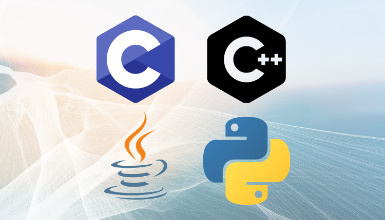Data Structure Using Java

DATA STRUCTURE USING JAVA: Ever wondered how computers organize vast amounts of information efficiently? The answer lies in data structures - the building blocks for managing data in programs. By mastering data structures using Java, you'll unlock the power to:
- Organize data efficiently: Learn proven methods to store and access information in a way that optimizes processing and retrieval.
- Solve complex problems: Equip yourself with the tools to efficiently handle various programming challenges, improving the performance and functionality of your applications.
• Lay the foundation for advanced programming: Gain a solid understanding of data structures, a crucial concept for exploring more advanced Java concepts and programming paradigms.
Saksham's Data Structures using Java course provides a structured and beginner- friendly approach, allowing you to:
- Grasp fundamental data structures: Master essential structures like arrays, linked lists, stacks, queues, and trees, understanding their functionalities and applications.
- Explore algorithms in action: Learn how data structures interact with algorithms, allowing you to efficiently manipulate and process data.
- Apply your knowledge: Solidify your understanding through engaging exercises and real-world projects, building your skillset and portfolio.
Why Choose Data Structures with Java?
Investing in learning data structures with Java offers several compelling advantages:
- Highly Demanded Skill: Mastering data structures is a highly sought-after skill across various industries, opening doors to exciting career opportunities.
- Applicable in Many Programming Languages: The core principles learned in Java translate seamlessly to other programming languages, making you a more versatile and adaptable programmer.
- Improves Problem-Solving Skills: Learn to think logically and efficiently, enhancing your problem-solving capabilities not only in programming but also in your overall approach to challenges.
Saksham's course offers a supportive learning environment:
- Expert-Led Video Lectures: Gain clarity with concise and engaging videos delivered by experienced instructors.
- Interactive Exercises and Projects: Practice your skills through challenging exercises and real-world projects, fostering your understanding and building your confidence.
- Supportive Community: Connect and collaborate with fellow learners and instructors in a friendly and encouraging environment.
Unlock the power of data structures with Saksham! By enrolling in this course, you'll gain the essential knowledge and practical skills to efficiently manage data in your Java programs, setting yourself on a path to becoming a highly skilled and adaptable programmer.
Start your journey toward data mastery today! Enroll in Saksham's Data Structures using Java course!


















